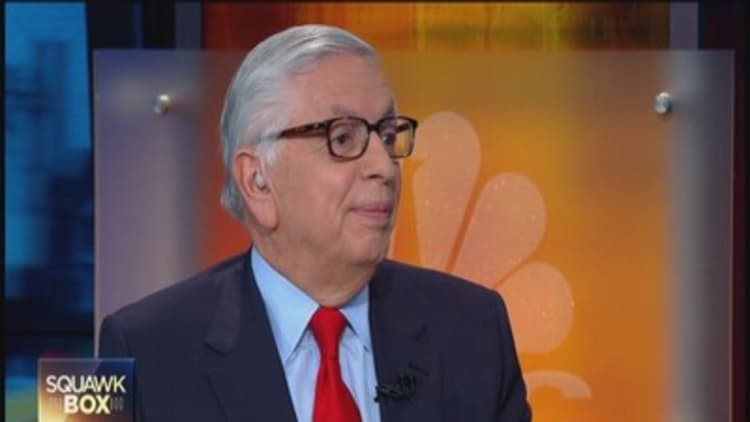Many people complain that athletes make a disproportionate amount of money. But what if they are actually underpaid—to the tune of $20 million?
At least a few sports economists are making that very argument, saying salary caps deprive professional athletes of earnings, and don't accomplish what they set out to do.
The term underpaid is used loosely, obviously, as it has to be when talking about multimillionaires who earn hundreds of times more than the average wage earner. Still, experts argue that athletes' salaries are being artificially suppressed due to caps that distort what their skills may be worth in an open market.
Like rent control or usury laws that put a ceiling on the price that consumers must pay, sports watchers say caps on pay create an artificially low market price for professional athletes compared to the marginal revenue product they provide. In other words, salaries could in fact be a lot higher, given the ways individual players contribute to their teams and the intangible benefits they bring to their respective geographic areas.
Read MoreNBA aims for global slam dunk with China deal
The average salary for a National Basketball Association player is more than $5 million—the richest among professional sports. However, Vanderbilt sports economist John Vrooman estimates that a well-known player such as Kevin Durant is in fact "probably being paid about half of what he is worth to the Oklahoma City Thunder."

Vrooman used a formula that estimates a player's worth by how many wins a player such as Durant produces for his team, then measures that against the team's total revenue. Based on his calculations, Durant produced at least $33 million of Oklahoma City's $152 million revenue yet only earned a 2014 base salary of $17.8 million.
"This implies that he is paid about 53.9 percent of what he is worth," the economist said, even though Durant earns multiples more than the average citizen, and earns millions more in endorsements.
Most leagues have different applications of salary caps, but the NBA provides a good example of essentially three salary restrictions that players face.
The first is a soft cap limiting the amount a team can spend on players to about 50 percent of Basketball Related Income (BRI), and that can be exceeded for a number of reasons. The second is a heavy luxury tax levied when a team exceeds a certain threshold, which in the case of the NBA is $76.8 million.
And the final cap is based on the amount of time a player has been within the league, which increases from 25 percent to 35 percent of BRI over a period of 10 years.
It's not always about the money
Advocates of a salary cap argue that it provides a competitive balance and allows teams from diverse economic backgrounds to fairly compete with each other. In theory, this competitive balance prevents historically successful teams from buying or accumulating too much talent, which University of Chicago economist Allen Sanderson says is one of the most lethal situations in of all of professional sports.
"If the Yankees won 162 games in a year, it wouldn't take long until attendance would drop off," Sanderson said, which could hurt everyone and not just players restricted by salary caps. Sanderson added that for people to watch the games and for tickets to be sold, leagues must foster competition, or interest in the sport may drop off.
Others, however, question that argument. Sports blogger and editor Michael Ozanian suggests that a salary cap marginally influences competitiveness, and overall "it doesn't usurp the value of being able to sign, recruit or draft good players."
In fact, teams with lots of money to throw around can be surprisingly noncompetitive, says Ozanian, who runs Forbes' SportsMoney blog. A prime example is the New York Knicks, which has one of the biggest payrolls in the NBA, and its talent-heavy neighbor, the Brooklyn Nets. Both teams have losing records this season and are painfully familiar with early playoff exits.
Read MoreMichael Jordan 'far superior' to Lebron: Ex-NBA champ
The Yankees have more championships than any other team in Major League Baseball, which has no salary cap. Yet in recent years, the Bronx Bombers, which until last year had the most expensive roster in baseball with a nearly $200 million payroll, have flopped in the post-season.
Some argue that team owners have colluded against free-market wages essentially to provide a discount for themselves. Ozanian suggested that the real beneficiaries of pay restrictions were those who own teams.
At least in theory, underpaying talent "are certainly to the benefit of the owners," he added.

